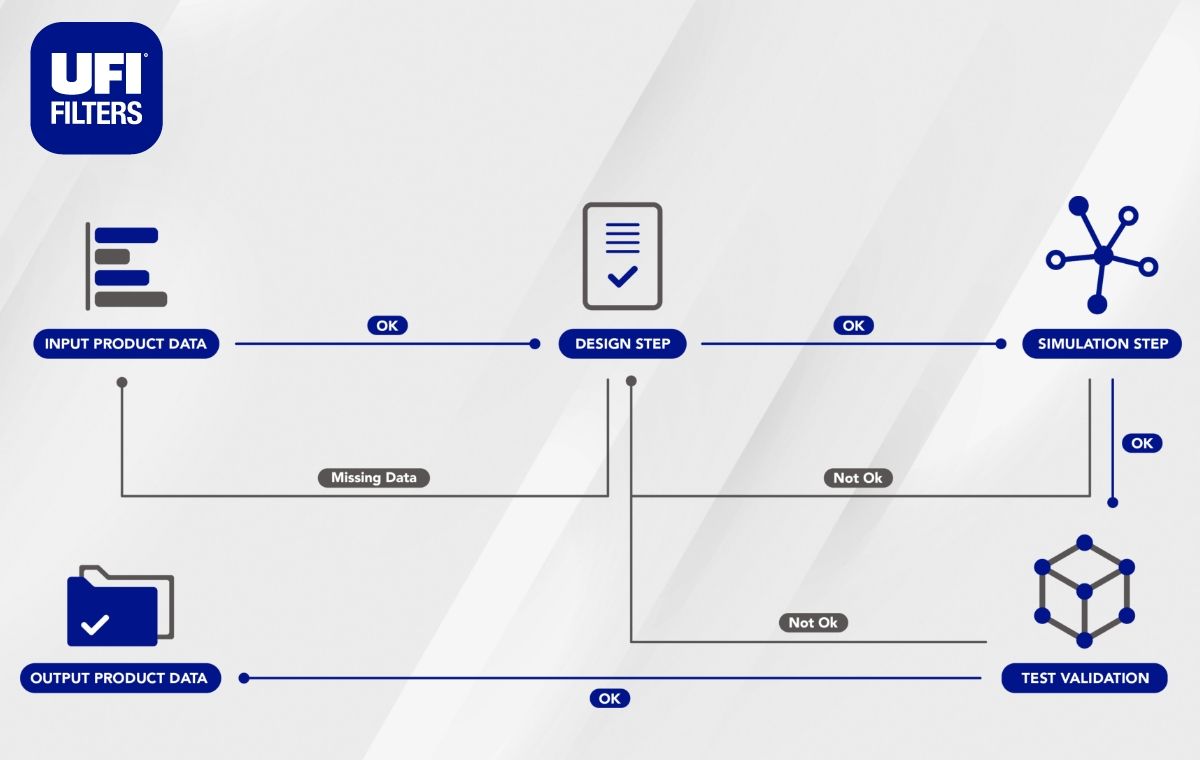
Discover how UFI Filters Hydraulics uses data collection to develop innovative high-performance filters
In the world of hydraulics, designing an effective filter is no easy task.
Each component must withstand sometimes extreme operating conditions, guarantee high performance, and meet the specific requirements of each application.
To achieve this, UFI Filters Hydraulics has developed a five-stage design process:
Data collection: a solid foundation for design
Data collection is the first critical step in the development of a new filter.
During this phase, our product engineers gather essential information defining the characteristics and performance of the filter.
This information includes:
- Operating conditions: Operating pressure, duty cycles, temperature range, environmental conditions (vibration, corrosion)
- Cleanliness target: Level of cleanliness required by the hydraulic system manufacturer
- Service life and storage: Expected service life of the filter and replacement, storage time
- Packaging: Regulation and specifications for filter packaging
To ensure that the data collected is as accurate and complete as possible, UFI Filters Hydraulics uses a digitized procedure in which each step of the design process is recorded in detail. Before proceeding to the next step, all the necessary data is entered and verified. The result is a digital data sheet that serves as a central reference tool for all company departments. This document summarizes all the essential information and acts as a checklist for the designers, ensuring that every detail is carefully considered.
In addition to the datasheet, our project engineers use a number of other resources, including:
- International guidelines and standards: ISO, EN, and other relevant industry standards
- Customer specifications: Specific customer requirements for the end application
- Internal specifications: UFI’s rules and standards for filter design
- Good design rules: Established engineering principles for designing reliable components
- Testing and analysis of previous filters: Lessons learnt about performance optimization from previous projects
Example of data collection: the WLB series
The WLB filter range is the result of precise and comprehensive data collection, which enabled the development of a high-quality product.
Designed for wind turbine and industrial equipment lubrication, WLB filters offer high performance and excellent corrosion resistance in a compact and versatile structure.
The design of the WLB filter began with a detailed analysis of the needs of the wind power and industrial sectors.
By taking into account the most demanding operating conditions and customer specifications, our product engineers were able to create a product that would guarantee consistent performance and reliability over time and would also be easy to use.
As a result of this careful initial analysis, the WLB range was born. This range has the following features:
- Flow rate up to 400 L/min
- Working pressure up to 3 MPa (30 bar)
- Robust and lightweight aluminium body for easy installation
- 5 versions available to meet different application requirements
- Versatile connection, available for both in-line and 90-degree installation
- User friendly design for quick and easy maintenance.
In the next article we will explore the next step in our process: the design phase.
Stay tuned to find out how the experience and ingenuity of our designers and the collected data combine to create high-quality products that meet the needs of different applications in the hydraulics industry!